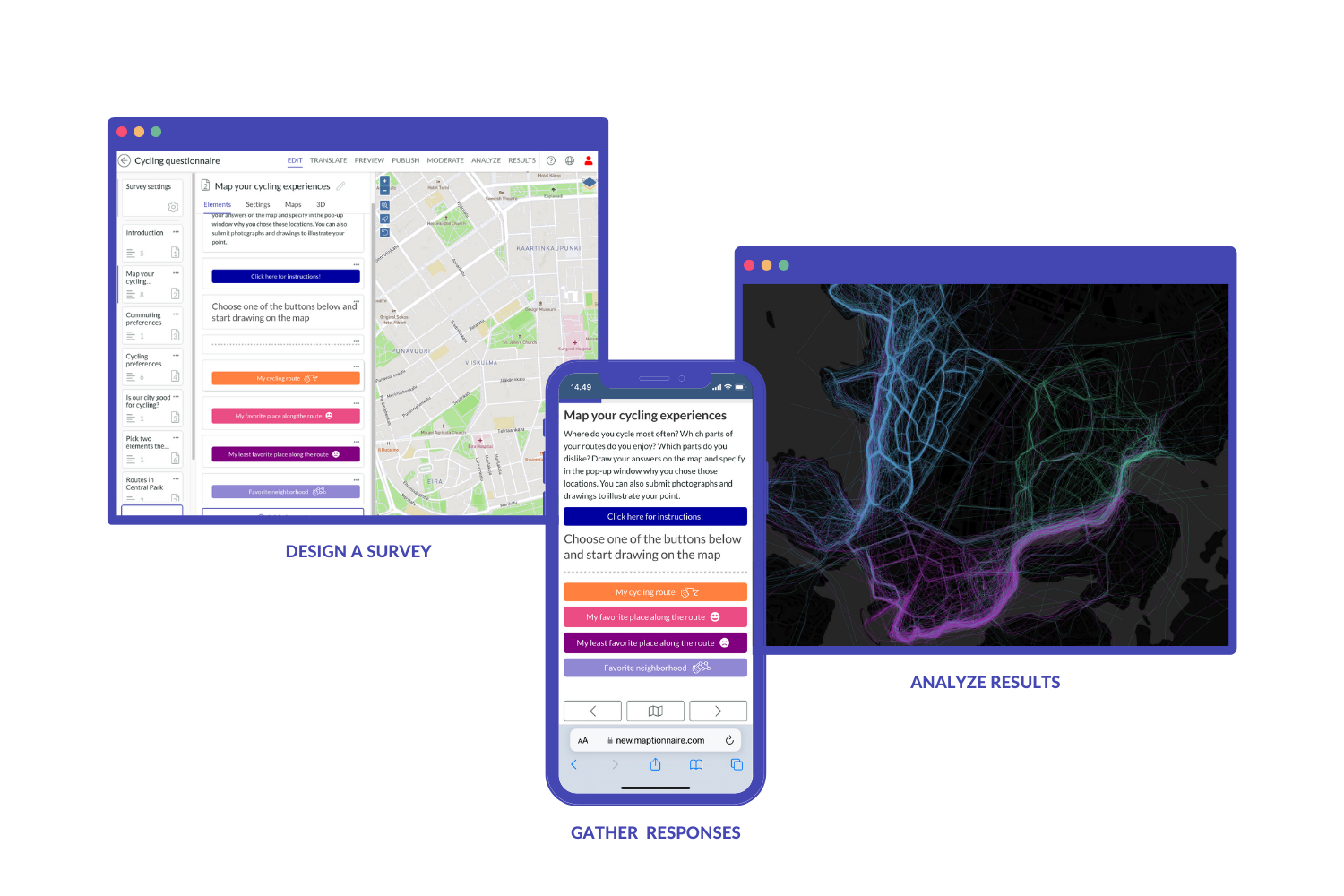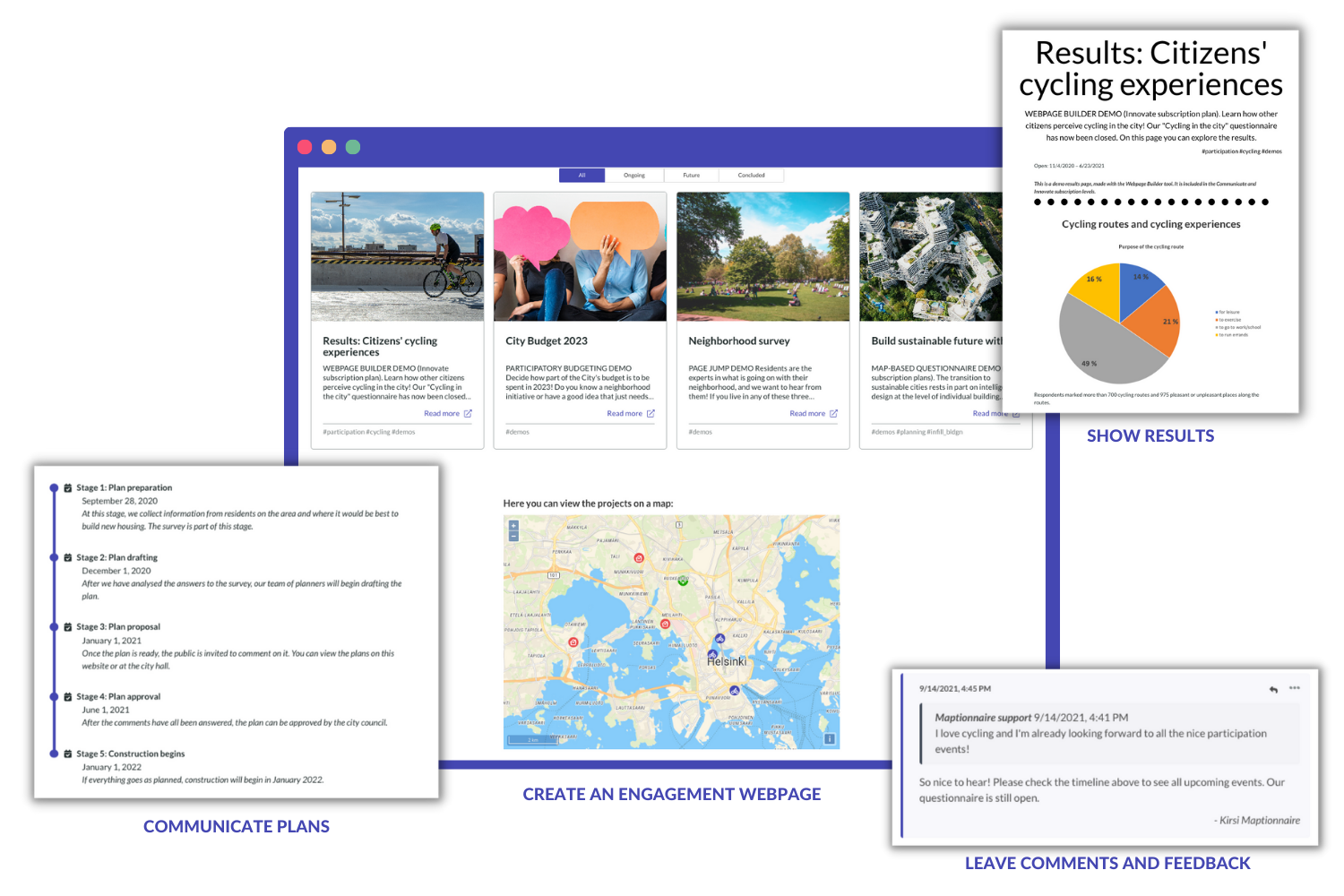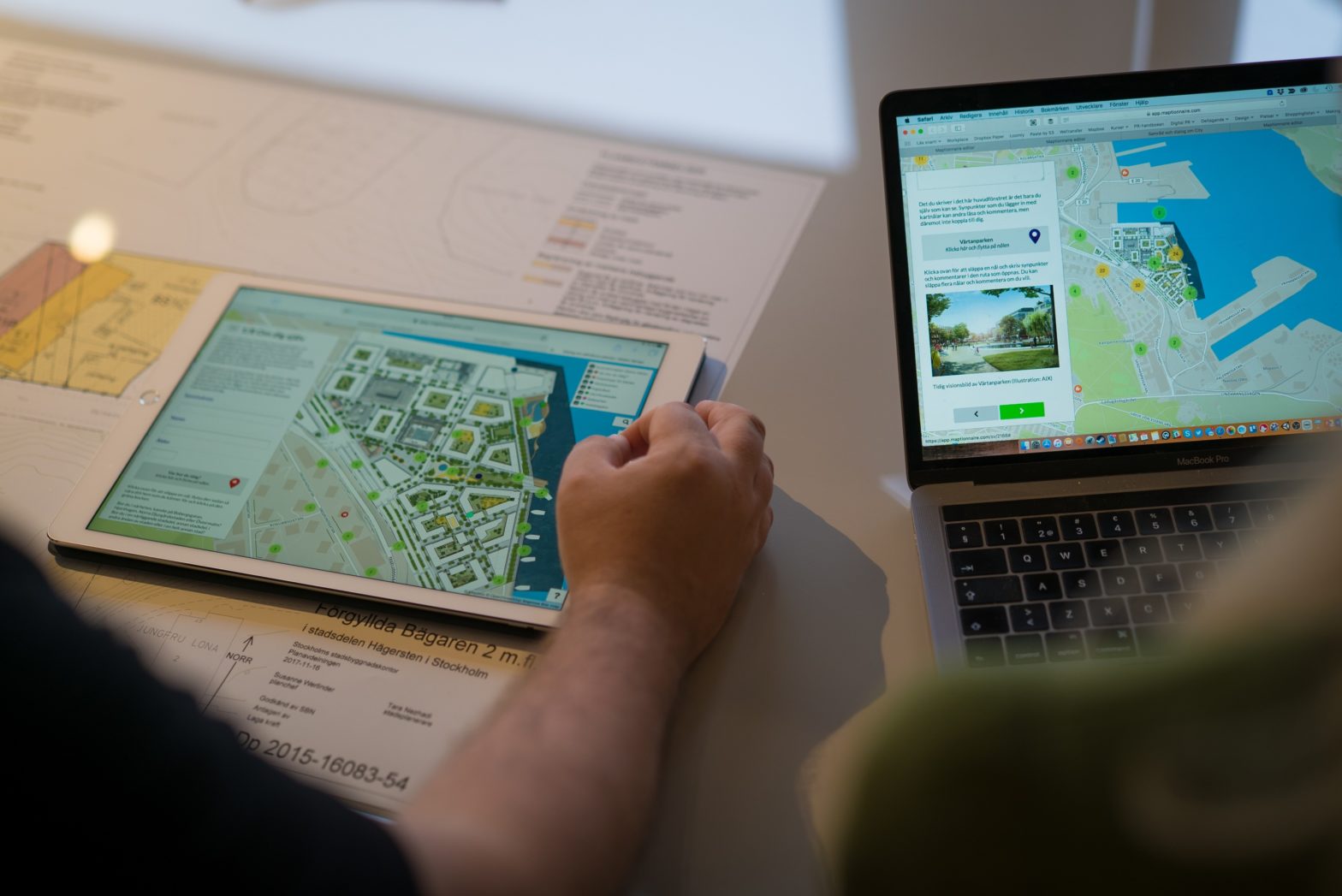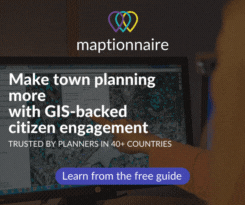
Photo: Julius Jansson on Unsplash
Create a masterplan that reflects local needs with interactive citizen engagement tools
25 April 2023
A masterplan is a defining strategy document for the future of a city, outlining its development and land use for the next 10-30 years. Given its importance, citizens need to be able to have a meaningful say in the planning process.
A masterplan has to reflect not only administrative goals but also the preferences of residents. How do they envision their city? Which areas should be prioritised? What are the problems that citizens most frequently encounter?
Involving citizens in the planning process ensures that conflicts are resolved at an early stage and the plan has broad approval. Despite this, community engagement and public consultations are mostly nominal and reduced to a few small meetings or a simple feedback form on a governmental website. Moreover, these activities do not provide planners with actionable data and insights for better designing a city area.
Digital citizen engagement tools can help planners and officials increase the impact of public participation on the planning outcome, especially if these tools come with robust mapping functions – after all, planning is about space.
Involve residents early in the planning process
In the early stages of the planning process, residents are at best informed about the upcoming changes but not asked for any tangible input. This is a missed opportunity.
Effective planning requires thorough knowledge of the local community. Use this initial stage to collect data about the stakeholders’ experiences of the existing environment and their needs for change.
Consider the kind of data and input you need from residents and how you will use it for preparing the first draft. Do you want to know local mobility preferences? Do you run a needs assessment to find out about missing infrastructure? Do you evaluate the level of perceived safety in the area?
All of this local knowledge is invaluable, and the only way to include it in the planning process is to engage residents directly – and obtain the results in a format that feeds easily into the planning process.
To capture these ideas during an early stage of masterplanning, you can use a digital map-based consultation tool to ask residents, for example, to mark unsafe areas, recreational routes, or locations of future facilities – the options are endless. Maptionnaire is a digital citizen engagement platform that will enable you to do exactly that: to gather citizens’ input and spatial feedback, evaluate it and effectively implement it in the process.

Benefits of pre-planning involvement
Early public participation helps, first of all, to align the key goals of the plan with the wishes of the residents. When done with Maptionnaire, it also produces extensive geolocated data (commute routes, favorite places, places that need maintenance, possible locations for future residential buildings, and so on) that the planners can use in creating the first draft of the plan.
Location-based engagement platforms help to introduce the planning projects to the public – map-based storytelling and surveying enable residents to connect abstract development goals with specific locations in the city.
Methods for inclusive and effective consultations
With digital engagement tools, planners can design various map-based and traditional surveys to gather data and feedback from residents on the draft and proposal stages and digitise public hearings. The same platform is suited for regularly informing residents about the current planning stages and what actions they can take – simply design a project webpage with Maptionnaire.
It’s proven again and again that digital interactive tools are more effective for reaching more people from various backgrounds. This ensures that the future masterplan takes into account diverse perspectives of citizens.
Also, digital tools don’t cancel the value of face-to-face activities – they amplify them. Maptionnaire is handy to use during in-person community engagement workshops for managing data collection. Residents and planners can co-design an engagement survey, reflect on the participation results, or respond to online surveys.
Finally, your data is there to analyse, export to GIS software, and archive for future needs. In turn, the same digital engagement tool can be used for reporting the results and arranging the next round of public consultation and stakeholder engagement.

Experiences from Helsinki: Early-stage community engagement
The masterplan of the City of Helsinki addresses the issues of sustainable transportation, economic growth, population increase, and the need for densification. Uniquely, its design included large-scale community engagement in the preparation stage. Local planners were especially eager to engage residents early in the process to transparently communicate about the future changes (and the challenges they will bring as the city needed heavy retrofitting and densification) and minimise conflicts in the future.
Helsinki used Maptionnaire to collect citizens’ input during this early-stage consultation. Locals were asked to mark on an interactive map potential locations for residential buildings and offices, as well as poorly maintained areas and areas that they would like to preserve.
The survey received responses from almost 4,000 citizens who marked a total of 32,989 different locations on the map. This data came in GIS datasets which were easy to integrate with other data in the subsequent proposal drafting stage. Planners were also able to learn about the needs and wishes of different demographic groups by combining the spatial data with other types of data from the survey.
Due to its digital format, the survey reached several times more people than traditional consultation means, such as town hall meetings and workshops.
Citizen engagement is no less crucial for the next stages of the masterplanning process – draft approval and public hearing, as well as implementation and maintenance. A digital platform for citizen engagement can well support you in these activities.






